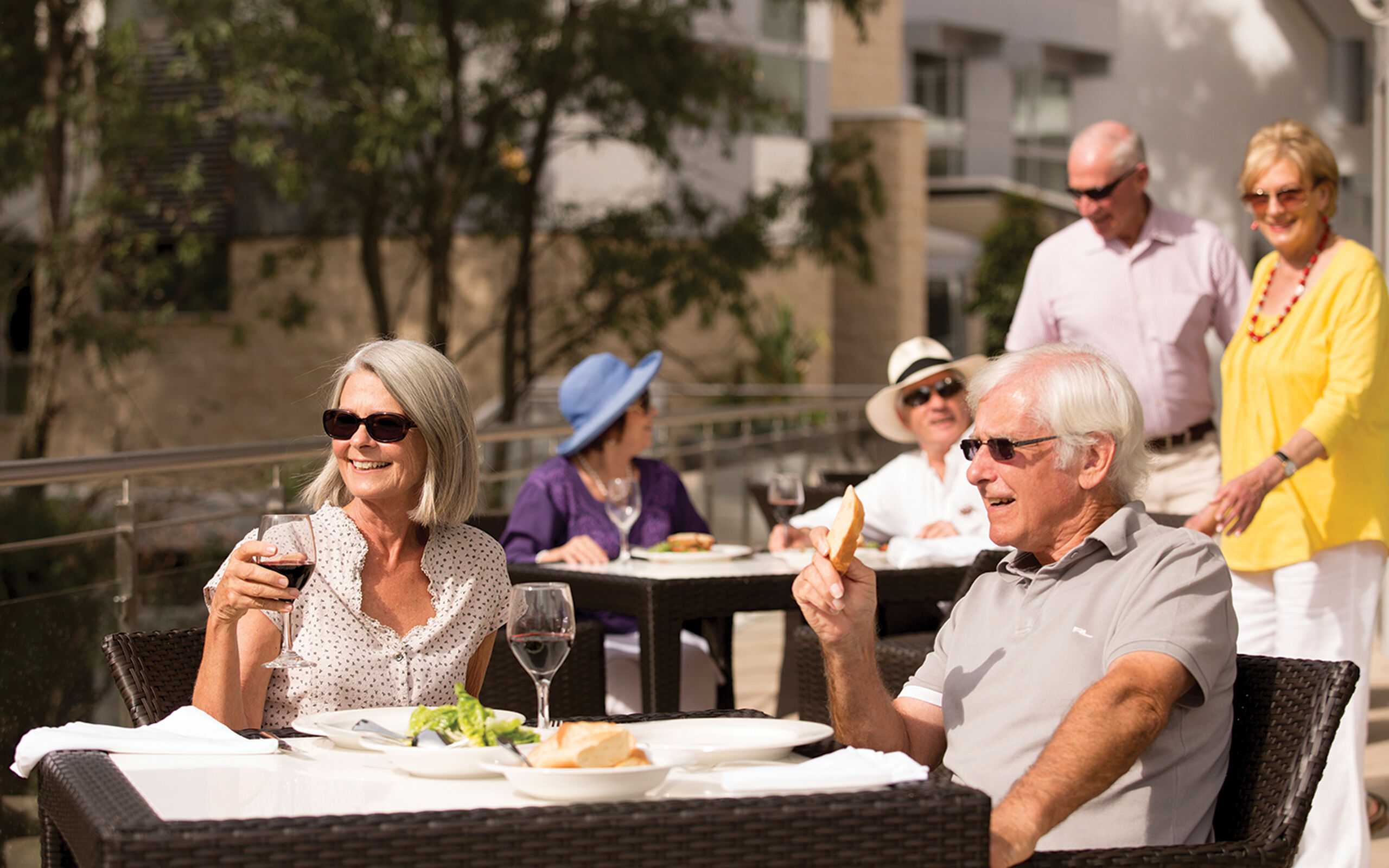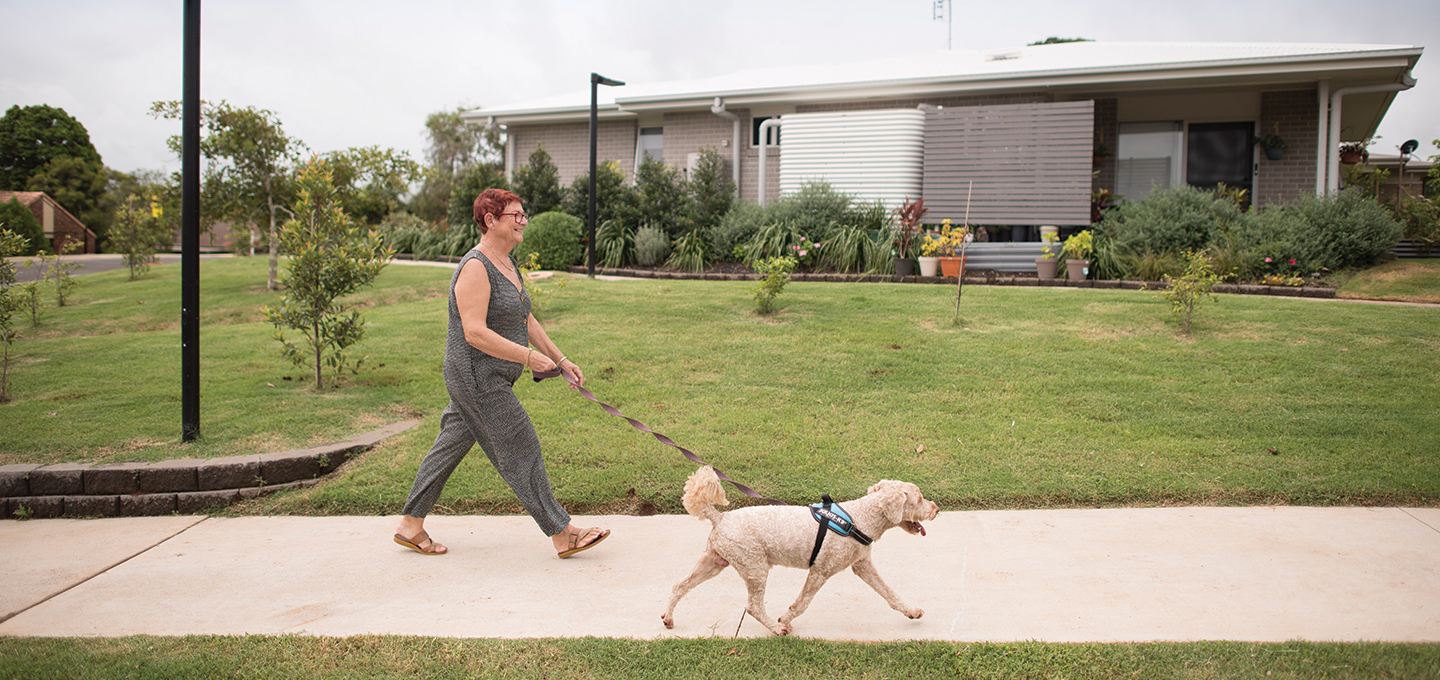What are the exit fees in a retirement village?
Retirement living communities are an increasingly popular lifestyle choice for Australians, but there’s often a question mark that hangs over the cost – and in particular, the exit fees. Here’s how they work.
Scroll to Explore

11 July 2023
Stories
| Retirement Living
Retirement living has become an increasingly popular lifestyle choice for many Australian seniors these days, with 5.7 percent of the over-65 population choosing to make the move into retirement villages. By 2025, this number is predicted to rise to 7.5 percent (Retirement Living Council, 2014).
And whilst many retirees are drawn to the idyllic lifestyle of a close-knit, friendly community with swimming pools, walking tracks, restaurants, and bowling greens all at their disposal, there is often a question mark that hangs over the cost, and in particular, the exit fees.
What are Exit Fees?
Exit fees are charged when you leave a retirement village. They are also known as Deferred Management Fees (DMF) or Departure Fees.
When you buy into the village, you will pay a lump sum called an Entry Payment (sometimes called an Ingoing Contribution). This is essentially the purchase price of the property.
Besides the fortnightly fees you pay whilst living in the village (which are a little like strata levies and cover the general upkeep of the village), the Entry Payment will be your main outgoing cost.
Once you decide to move out of the village, you will have this Entry Payment returned to you – the Exit Fee is deducted from your returned Entry Payment.
How much money will be deducted? Typically, it’s around 30 percent if you lived in the retirement village for six years or more.
If you leave before the capped six years, the exit fee is usually charged at five percent for each year that you lived in the village.

Can I opt out of an exit fee?
You can opt out of paying an exit fee or pay significantly less - so long as you pay a higher lump sum when buying into the retirement village.
There is often flexibility in this way, and the exact amount you pay can be customised based on your individual circumstances.
For example, some residents might choose to:
- Pay a lower entry payment and have a higher percentage of it deducted when they leave the village.
Other residents may prefer to:
- Pay a higher entry payment and have less deducted – or even a full refund – when they leave.
It is always recommended that you consult with a financial planner to work out which option will suit you best.

Does my ownership agreement affect the Exit Fee?
If you buy into a retirement village in NSW or the ACT, the three most common types of ownership are:
- Lease Hold – You pay the property’s market value in exchange for a period of time (for example, a 99-year lease). This is most commonly used by ‘for-profit’ operators.
- Strata or Community Title – You pay the agreed purchase price, are registered on the title deed, and become a member of the owners’ corporation. This is an uncommon form of ownership in retirement villages.
- Loan License Agreement – Your lump sum (entry) payment buys you a licence to occupy your home indefinitely. This is commonly used by not-for-profit providers.
At BaptistCare, we offer our residents a Loan Licence Agreement. This means that your Entry Payment will buy you the ‘licence’ to live in your home for as long as you like.
There are several benefits associated with a Loan Licence Agreement, such as:
- No stamp duty
- No capital replacement – this means that your Exit Fee will not include the replacement or repair of any items provided by the operator
- No refurbishment costs when you leave
- Guaranteed fixed return with no capital loss or gain (this means the value of your home will stay the same during the time you live there)

How do I learn more?
Learn more about the costs of retirement living via our blog “How much does it cost to live in a retirement village?” and see for yourself what our beautiful villages have to offer, here.
Got questions? Speak to one of our friendly team via the phone number listed below, or leave us an enquiry and we’ll get back to you within the next few days.
How do I find a BaptistCare retirement village near me?
You can explore the benefits of retirement community living near you by using BaptistCare’s handy online tool to find a location in New South Wales or Canberra.
BaptistCare has been trusted by thousands of Australians across the retirement living, aged care and community service sectors since 1944. While we are not-for-profit, there are a few things that we certainly are for: outstanding quality and a quest to truly make a difference, not just in our Retirement living communities, but in all communities.
Click the link below to learn more about BaptistCare's
Retirement Living | Financials Explained | Adaptive Living | Find a village
Make an Enquiry
If you would like to know more, please contact us on 1300 275 227 or complete the enquiry form and one of our customer representatives will be in touch.